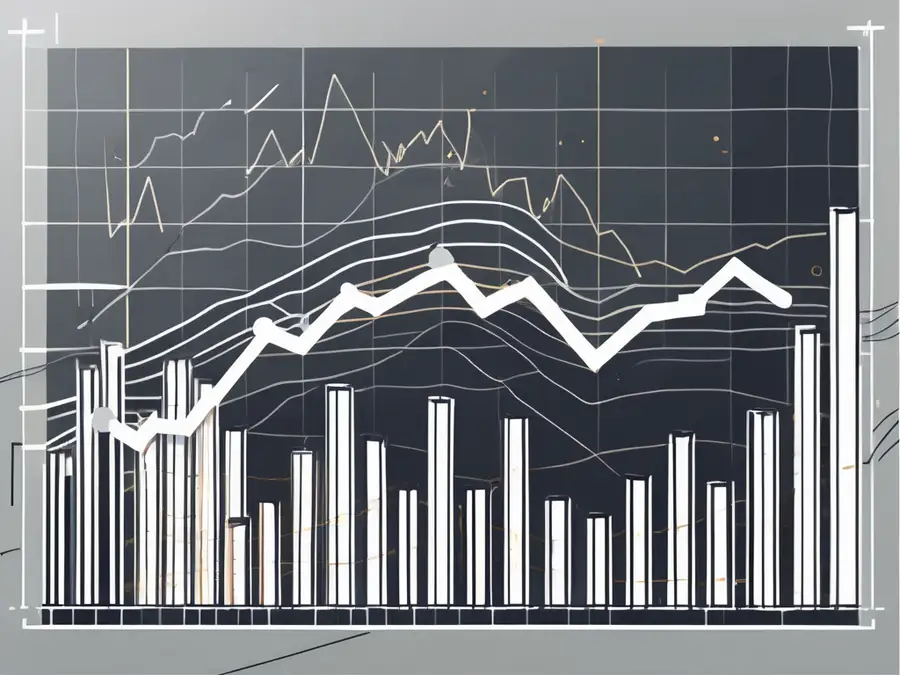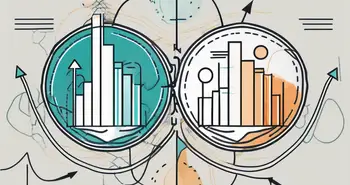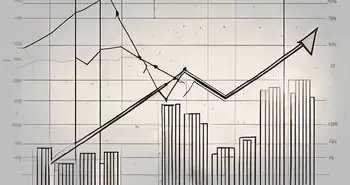Market Microstructure: The Hidden Dynamics Behind Order Execution

Market microstructure is a fascinating area of finance that explores how various facets of trading affect the price formation process. While many are familiar with the concept of a market, understanding the nuances of microstructure helps shed light on how transactions occur beneath the surface. Let’s dive into the defining aspects of market microstructure and why it's essential for anyone involved in trading or investing.
Defining Market Microstructure
Market microstructure refers to the mechanisms and processes that facilitate trading in a financial market. This encompasses everything from the organization of exchanges and market participants to the information that influences trading decisions. Essentially, it's the framework within which buyers and sellers interact, influencing how prices evolve.
At its core, market microstructure attempts to answer pivotal questions about how trades are executed and how different factors impact pricing. It focuses on the details—how orders are matched, how transactions are executed, and what market conditions shape the way these processes function. Understanding these intricacies is crucial for traders, as it can significantly affect their strategies and outcomes.
Moreover, the study of market microstructure delves into the behavioral aspects of trading, examining how psychological factors and market sentiment can drive price movements. For instance, during periods of high uncertainty, traders may react more emotionally, leading to erratic price changes that deviate from fundamental values. This interplay between human behavior and market mechanics adds another layer of complexity to the microstructure analysis.
The Role of Market Microstructure in Finance
The importance of market microstructure cannot be overstated. It helps in understanding the efficiency of markets, volatility, and overall liquidity. For instance, a well-functioning market that matches buyers and sellers efficiently tends to have minimal price discrepancies, leading to sharper pricing and better investment decisions.
On the flip side, poor microstructure can lead to issues such as wider spreads and increased volatility. For example, during a crisis, a lack of liquidity might make it challenging for investors to sell assets quickly without significant price concessions. This can create a feedback loop where declining prices further erode liquidity, exacerbating market distress and leading to a more pronounced downturn.
Additionally, the role of technology in market microstructure has grown exponentially with the rise of algorithmic trading and high-frequency trading strategies. These technological advancements allow for rapid order execution and data analysis, but they also introduce new challenges, such as flash crashes and market manipulation. Understanding how these technologies interact with traditional market dynamics is essential for both regulators and market participants.
Key Elements of Market Microstructure
Several components make up the market microstructure framework. Key elements include:
- Order Types: Different types of orders, such as market orders and limit orders, affect how trades are executed.
- Market Participants: Various players, including retail investors, institutional investors, and market makers, each have unique strategies and goals.
- Information Asymmetry: The private knowledge of market participants can lead to unequal advantages, affecting pricing.
- Execution Venues: The platforms where trades are executed can influence transaction costs and speed.
In addition to these elements, the concept of liquidity is paramount in market microstructure. Liquidity refers to the ease with which assets can be bought or sold in the market without causing significant price changes. High liquidity typically leads to tighter spreads and more stable prices, while low liquidity can result in erratic price movements and increased trading costs. Understanding the factors that contribute to liquidity, such as the number of active participants and the volume of trades, is vital for traders looking to navigate the complexities of the market effectively.
Theoretical Frameworks in Market Microstructure
Delving deeper into market microstructure, several theoretical frameworks exist that help explain how trading impacts markets. Let's examine two significant approaches: the information-based approach and the strategic-trading approach.
The Information-Based Approach
This framework centers on how information influences trading and pricing. Market participants react to new information differently, which can lead to varying outcomes. For instance, if a company releases unexpected earnings, investors who act swiftly on this information can benefit while those who wait might miss opportunities.
Market efficiency plays a significant role here. An efficient market quickly incorporates new information into asset prices, thereby minimizing potential for arbitrage opportunities.
The Strategic-Trading Approach
In contrast, the strategic-trading approach focuses on the strategic behavior of market participants. Investors might intentionally trade in ways to maximize their gains while minimizing losses or even to manipulate prices based on their insights about other traders’ actions.
A classic example is when a large institutional investor decides to buy a substantial amount of stock. Their trading strategy may span over several days to avoid triggering significant price changes, known as “market impact.”
Understanding Liquidity in Market Microstructure
Liquidity is a key characteristic within market microstructure that influences both trading and investment strategies. It relates to how easily assets can be bought or sold in the market without causing significant price changes.
The Importance of Liquidity
High liquidity means that assets can be traded with ease, resulting in narrower bid-ask spreads and lower transaction costs. For traders, this translates into increased efficiency and the ability to react swiftly to market changes.
Consider a popular tech stock—when it's liquid, an investor can buy or sell quickly without impacting the stock's price. Alternatively, assets that are illiquid often have wider spreads and can lead to higher trading costs.
Factors Influencing Market Liquidity
Several factors play a role in determining market liquidity, including:
- Market Depth: A measure of the amount of buy and sell orders at various price levels.
- Market Activity: Higher trading volumes usually indicate greater liquidity.
- Market Sentiment: Investors' perceptions and reactions can either encourage or inhibit trading activities.
Price Discovery and Market Microstructure
Another significant concept is how market microstructure influences price discovery—the process by which the market determines the price of an asset through the interactions of buyers and sellers.
The Process of Price Discovery
The price discovery process can be complex, involving multiple rounds of buying and selling. As new information becomes available, traders assert their views on the asset's value, leading to price adjustments. For example, if analysts predict that a company will grow significantly, this optimism is typically reflected in the stock price shortly thereafter.
Impact of Market Microstructure on Price Discovery
The structure of the market significantly affects this discovery process. Efficient markets will integrate new information quickly, while inefficient markets might reflect persistent lagging adjustments in price. For traders, recognizing market microstructure can provide an edge in understanding how and when to enter or exit their positions.
High-Frequency Trading and Market Microstructure
High-frequency trading (HFT) has become exceedingly prevalent in modern markets. Utilizing advanced algorithms and high-speed connections, HFT seeks to capitalize on minute price changes, often making thousands of trades in a single day.
The Rise of High-Frequency Trading
The rise of HFT has changed the dynamics of market microstructure dramatically. With the ability to execute trades in milliseconds, high-frequency traders can compete on a level undreamt of by traditional investors.
While this can contribute to greater liquidity, it may also increase volatility, as rapid buys or sells can lead to quick price swings.
Effects of High-Frequency Trading on Market Microstructure
High-frequency trading affects overall market efficiency and liquidity. On one hand, HFT typically tightens spreads and increases market depth by providing liquidity. On the other hand, the speed and volume of transactions can create erratic price movements, sometimes termed “flash crashes.”
Understanding the implications of these effects is crucial for traders as they navigate today’s technologically driven marketplaces.
FAQ
What is market microstructure?
Market microstructure refers to the specific processes and mechanisms through which assets are traded in financial markets. It explores the impact of various factors on price formation and trading efficiency.
Why is liquidity important in market microstructure?
Liquidity describes how easily assets can be bought or sold. High liquidity typically leads to lower transaction costs and narrower spreads, which are beneficial for traders. In contrast, illiquidity can lead to higher costs and price volatility.
How does price discovery work in market microstructure?
Price discovery is the process through which the market determines the price of an asset based on supply and demand dynamics among traders. Market microstructure plays a crucial role, as efficient markets integrate information quickly, whereas inefficient markets may lag in price adjustments.
By understanding market microstructure, traders can develop strategies that work more efficiently within this complex framework, ensuring better decision-making in their trading endeavors.
Now that you've gained insights into the intricacies of market microstructure, take your trading to the next level with Morpher. Experience the revolutionary trading platform that harnesses blockchain technology to offer zero fees, infinite liquidity, and a multitude of assets to trade, including stocks, cryptocurrencies, and more. With Morpher, you can start investing with as little as $1, enjoy the benefits of fractional investing, and capitalize on market movements with 10x leverage. Your safety is paramount with our non-custodial Morpher Wallet, giving you full control over your funds. Ready to transform your trading experience? Sign Up and Get Your Free Sign Up Bonus today and join the future of investing with Morpher.

Disclaimer: All investments involve risk, and the past performance of a security, industry, sector, market, financial product, trading strategy, or individual’s trading does not guarantee future results or returns. Investors are fully responsible for any investment decisions they make. Such decisions should be based solely on an evaluation of their financial circumstances, investment objectives, risk tolerance, and liquidity needs. This post does not constitute investment advice.

Painless trading for everyone
Hundreds of markets all in one place - Apple, Bitcoin, Gold, Watches, NFTs, Sneakers and so much more.

Painless trading for everyone
Hundreds of markets all in one place - Apple, Bitcoin, Gold, Watches, NFTs, Sneakers and so much more.









